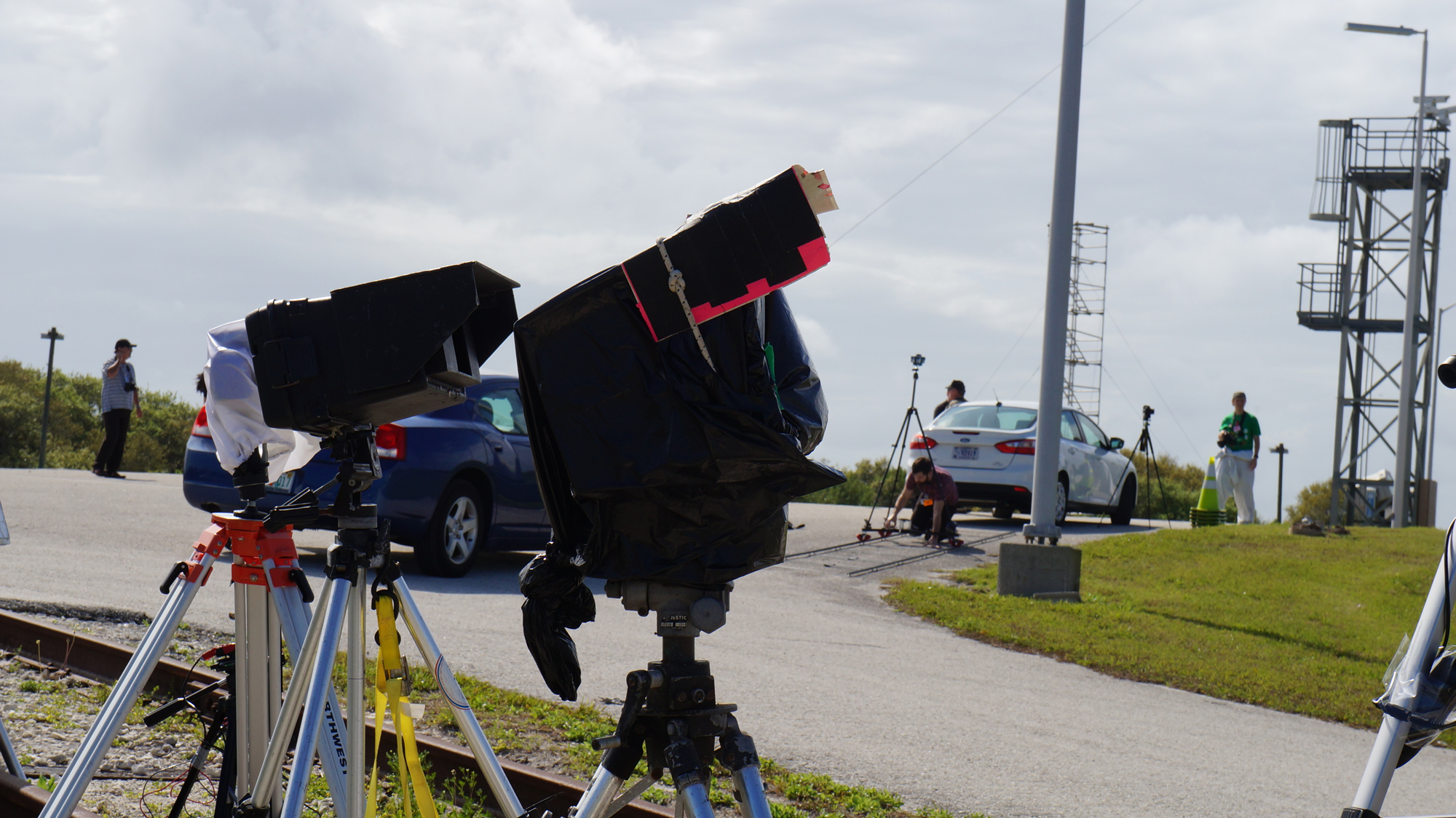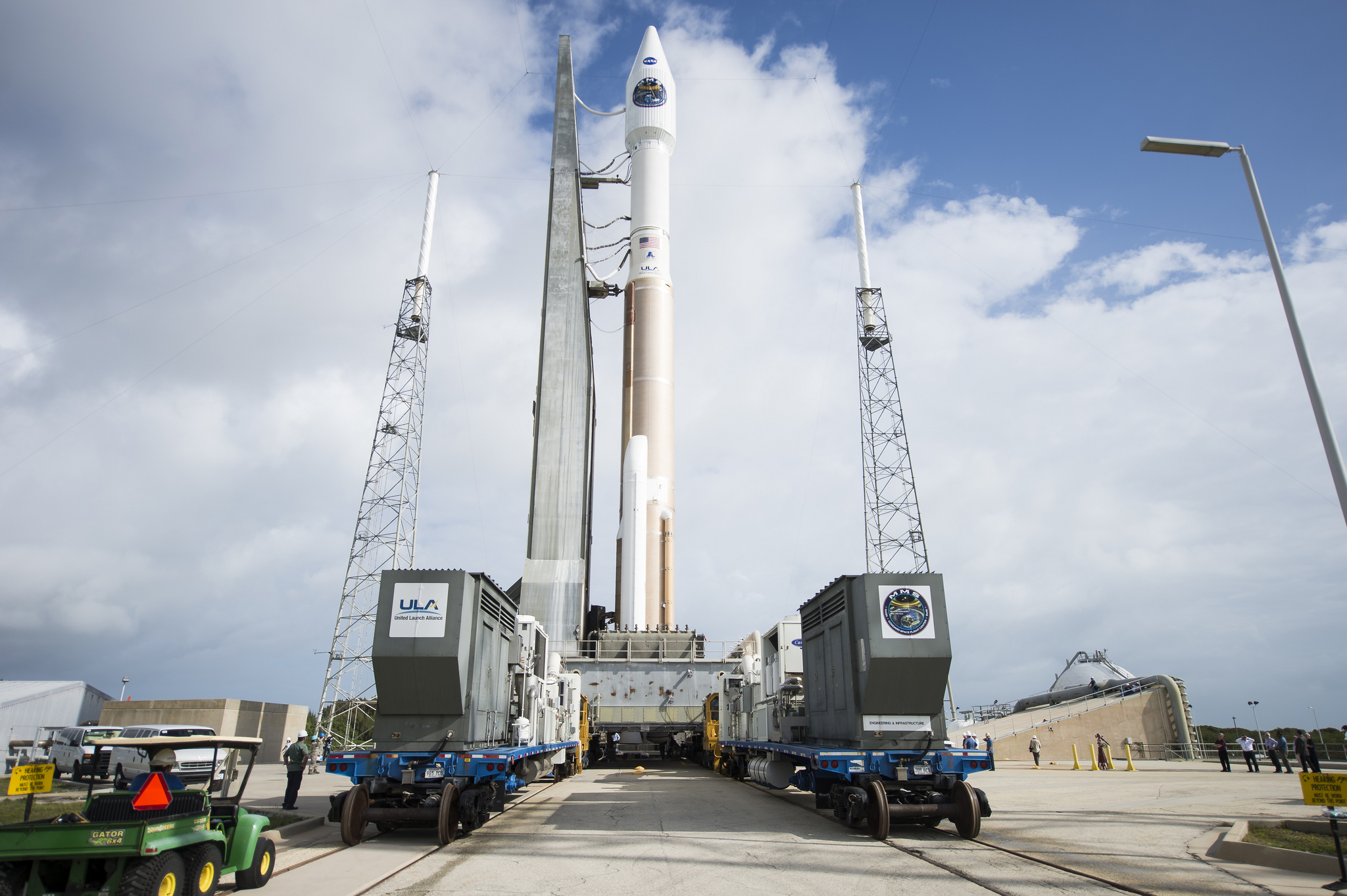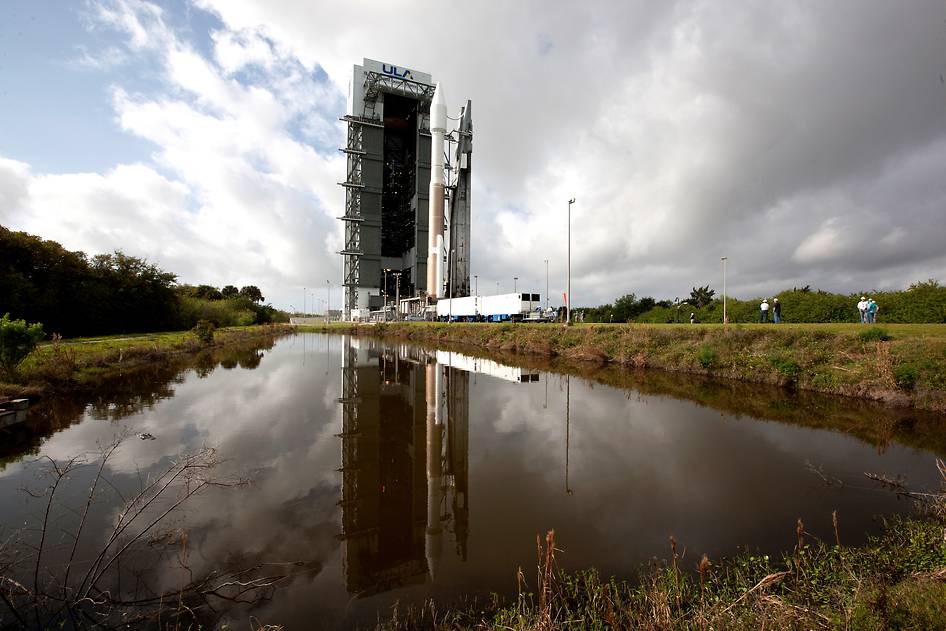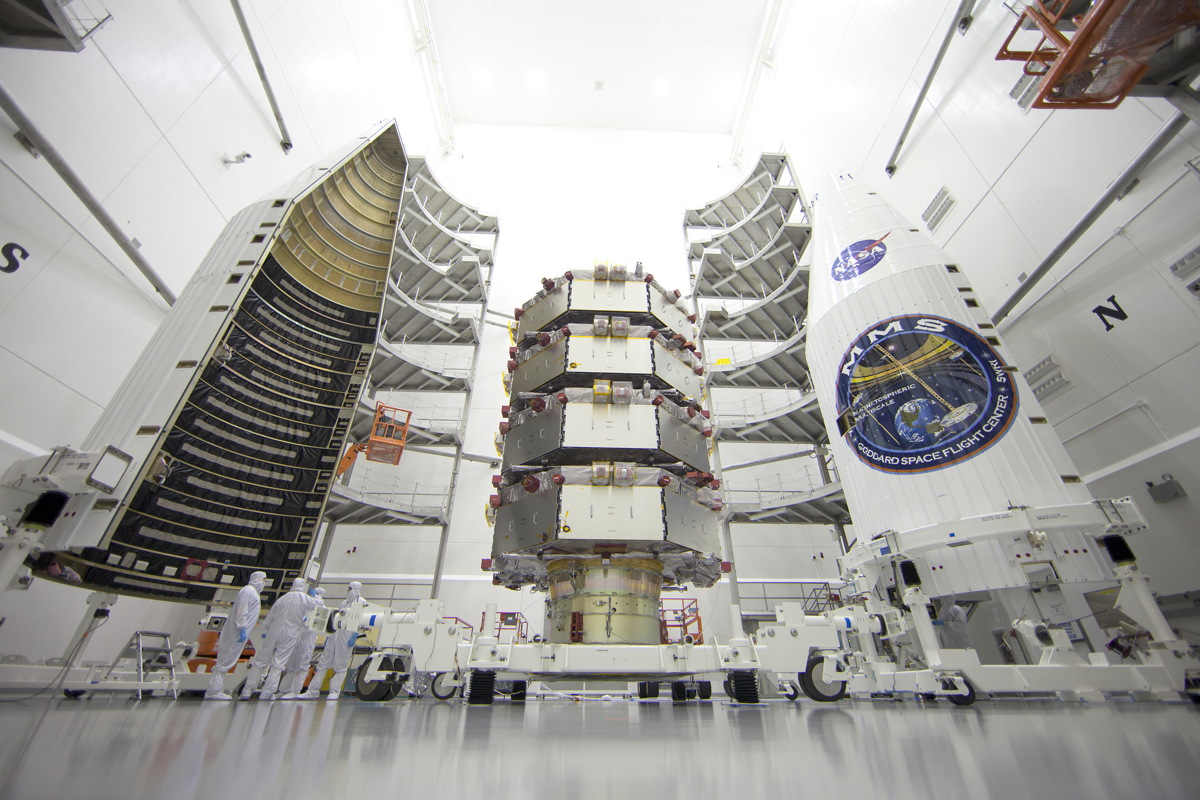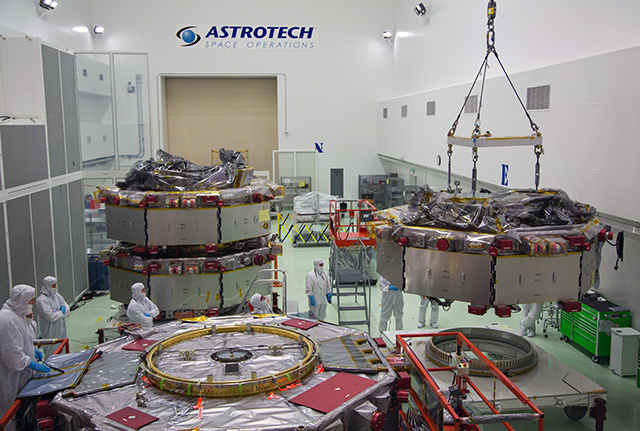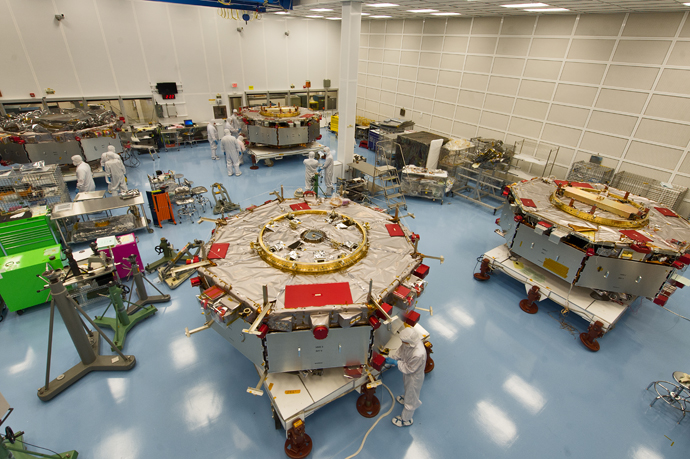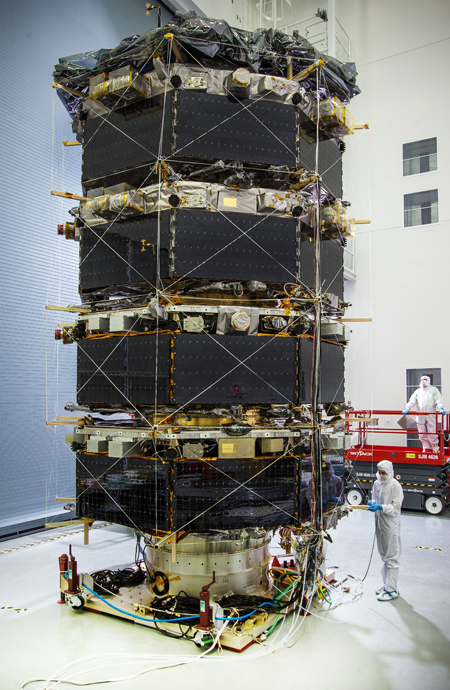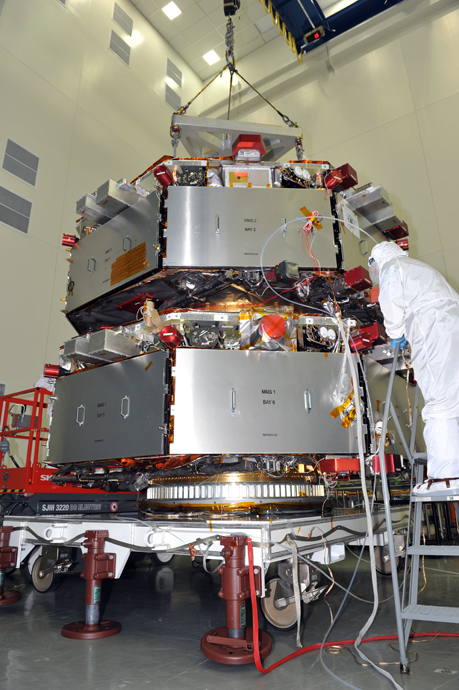Satellite Quartet: NASA's Magnetospheric Multiscale Mission in Pictures
Atlas V MMS Launch Photography
More than a dozen photographers set up cameras only a few hundred feet from the Atlas V rocket that is set to launch today (March 12). To protect the cameras from heat and rain, the photographers build their own protection devices; here, cameras are protected by white cloth, black plastic boxes, poster board and garbage bags.
NASA MMS Satellites Launch Pad
A United Launch Alliance Atlas V rocket carrying NASA's four Magnetospheric Multiscale mission satellites rolls out to the launch pad at Cape Canaveral Air Force Station in Florida one day before its planned March 12, 2015 launch. The mission will study magnetic reconnections in Earth's magnetic field to better understand solar storms.
MMS Rolled to Launch Pad
NASA's Magnetospheric Multi-Scale mission satellites and their Atlas V rocket are rolled out to the launch pad at Florida's Cape Canaveral Air Force Station ahead of a planned March 12, 2015 launch.
Magnetospheric Multiscale Observatories Prepared for Launch
Workers processed NASA's Magnetospheric Multiscale (MMS) observatories for launch in a clean room at the Astrotech Space Operations facility in Titusville, Florida. Image released Feb. 19, 2015.
Bagging MMS Finishing Touches
At NASA’s Goddard Space Flight Center in Greenbelt, Maryland, the MMS engineering team finishes applying special adhesive to the bag which houses NASA’s Magnetospheric Multiscale (MMS) observatories #1 and 2.
MMS Observatories Spin Tests
The Magnetospheric Multiscale (MMS) Observatory #4, undergoes spin testing on the Miller Table for Mass Properties at NASA’s Goddard Space Flight Center in Greenbelt, Maryland. Image released Oct. 2, 2014.
All Four MMS Spacecraft
This photo shows all four MMS spacecraft at Astrotech.
Breaking space news, the latest updates on rocket launches, skywatching events and more!
Four MMS Spacecraft Separate
This photo shows all four spacecraft in the MMS Cleanroom being prepared for stacking operations.
MMS Fully Stacked
The fully stacked MMS stands tall before being bagged for vibration tests.
MMS 1 Lowered onto MMS 2
MMS 2 lowers onto MMS 1 to create the first Mini-Stack.

Calla Cofield joined Space.com's crew in October 2014. She enjoys writing about black holes, exploding stars, ripples in space-time, science in comic books, and all the mysteries of the cosmos. Prior to joining Space.com Calla worked as a freelance writer, with her work appearing in APS News, Symmetry magazine, Scientific American, Nature News, Physics World, and others. From 2010 to 2014 she was a producer for The Physics Central Podcast. Previously, Calla worked at the American Museum of Natural History in New York City (hands down the best office building ever) and SLAC National Accelerator Laboratory in California. Calla studied physics at the University of Massachusetts, Amherst and is originally from Sandy, Utah. In 2018, Calla left Space.com to join NASA's Jet Propulsion Laboratory media team where she oversees astronomy, physics, exoplanets and the Cold Atom Lab mission. She has been underground at three of the largest particle accelerators in the world and would really like to know what the heck dark matter is. Contact Calla via: E-Mail – Twitter
